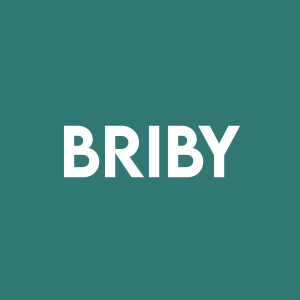Brii Bio Presents Late-Breaking Data from Its Ongoing Phase 2 ENSURE Study at EASL Congress 2025, Suggesting BRII-179's Role in Advancing Higher HBsAg Loss
Rhea-AI Summary
Positive
- 61% of anti-HBs responders achieved HBsAg seroclearance vs 10% of non-responders
- 83% of BRII-179 experienced participants achieved faster HBsAg loss by Week 24
- Combination therapy showed higher HBsAg loss rate (21.1-33.3%) vs PEG-IFNα alone (5.6%)
- Treatment was generally safe and well-tolerated
- 91% of anti-HBs responders who lost HBsAg had high antibody titers
Negative
- Treatment requires multiple therapeutic combinations and extended duration
- Not all patients respond to the treatment (only 10% of non-responders achieved seroclearance)
- Results limited to patients with specific baseline HBsAg levels (100-3,000 IU/mL)
- End of treatment (EOT) data from Cohort 4 of the ENSURE study suggest that patients responding to prior BRII-179 treatment achieved faster and higher rate of surface antigen clearance with curative treatments compared to BRII-179 naïve participants, strengthening the case for a novel enrichment strategy, utilizing BRII-179 to identify and prime patients for improved functional cure outcomes
- 24 Week follow-up results from Cohorts 1-3 of the ENSURE study demonstrated sustained off-treatment benefits of elebsiran + PEG-IFNα combination therapy vs PEG-IFNα alone
ENSURE (NCT05970289) is a multicenter, open-label Phase 2 study. Cohorts 1-3 were designed to evaluate the contribution of elebsiran, an investigational small interfering ribonucleic acid (siRNA), to the combination treatment with pegylated interferon alpha (PEG-IFNα) in participants with chronic HBV infection with baseline hepatitis B surface antigen (HBsAg) of 100-3,000 IU/mL.
Cohort 4 enrolled participants who completed 9 doses of BRII-179, a recombinant protein-based therapeutic vaccine, in combination with elebsiran in a previous APAC study BRII-179-835-001 (NCT04749368) to receive elebsiran and PEG-IFNα combination treatment. These participants were grouped based on their anti-HBs response induced by prior BRII-179 treatment: those with peak anti-HBs titers ≥ 10 IU/L are defined as anti-HBs responders, and those with peak anti-HBs titers < 10 IU/L as non-responders. The design of Cohort 4 as part of this study was based on the insight that BRII-179 could differentiate between immune responders and non-responders, offering the potential to predict future response to therapy.
Interim data from Cohort 4 showed that anti-HBs responders achieved a substantially higher rate of HBsAg seroclearance than non-responders. At EOT (Week 48),
Of note, BRII-179 experienced participants in Cohort 4 achieved HBsAg loss faster than BRII-179 naïve participants in Cohort 2 and 3.
Additional data from Cohorts 1-3 of the ENSURE study showed the combination therapy of elebsiran either 100 mg or 200 mg and PEG-IFNα resulted in higher HBsAg loss rate at 24 weeks post EOT compared to PEG-IFNα alone, supporting the additive benefit of siRNA.
"The data from Cohort 4 of the ENSURE study are encouraging. We saw in target populations that patients who were immune-responsive through pre-treatment with BRII-179 demonstrated a significant advantage in achieving a higher HBsAg seroclearance rate," said David Margolis, MD, Chief Medical Officer of Brii Bio. "With BRII-179, we may identify patients with less impaired intrinsic immunity and further prime their immune response. This approach may provide more durable HBsAg loss and potentially shorter treatment duration of PEG-IFNα. We are moving full speed ahead with our clinical efforts to deliver a meaningful option to the chronic hepatitis B patients long left waiting."
Abstract Number: LB25123/ LBP-018
Title: Chronic hepatitis B virus infected participants responding to prior BRII-179 treatment achieved faster and higher rate of hepatitis B virus surface antigen seroclearance on elebsiran plus pegylated interferon-alfa: end of treatment data from ENSURE study
Presenter: Grace Lai-Hung Wong, MBChB (CUHK), MD (CUHK), FRCP (Lond, Edin), FHKCP, FHKAM (Medicine), Professor of Gastroenterology and Hepatology at CUHK Medical Data Analytics Centre (MDAC) and Department of Medicine and Therapeutics in Hong Kong SAR,
- A total of 28 participants with baseline HBsAg > 100 and ≤ 3000 IU/mL were analyzed. 18 and 10 participants had peak anti-HBs titer ≥ 10 IU/L (defined as anti-HBs responders) and < 10 IU/L (defined as non-responders) induced by BRII-179 in the previous study, respectively.
- Median [range] HBsAg at the time of initiating elebsiran + PEG-IFNα was numerically higher in anti-HBs responders (539.4 [106.7-2165.0] IU/mL) than in non-responders (219.3 [106.7-671.5] IU/mL). At EOT (Week 48),
61% (11/18) of anti-HBs responders achieved HBsAg seroclearance, compared to10% (1/10) of non-responders. - Among the anti-HBs responders who lost HBsAg,
91% (10/11) had anti-HBs titers ≥ 100 IU/L at EOT. - BRII-179 experienced participants achieved HBsAg loss faster than BRII-179 naïve participants, with
83% (10/12) of HBsAg loss occurring by Week 24 (vs55% [6/11] in BRII-179 naïve participants). - Elebsiran + PEG-IFNα was generally safe and tolerated in BRII-179 experienced participants.
Abstract Number: LB25115/ LBP-016
Title: Efficacy and safety of elebsiran and pegylated interferon alfa combination therapy versus pegylated interferon alfa in participants with chronic hepatitis B virus infection: follow-up results from the ongoing phase 2, randomized, open-label ENSURE study
Presenter: David Margolis, MD, MPH, Chief Medical Officer of Brii Biosciences
- At Week 72 (24 weeks post EOT), higher HBsAg loss rate was observed in participants on combination therapy of either elebsiran 200mg or 100 mg and PEG-IFNα compared to PEG-IFNα alone (
21.1% [4/19] or33.3% [6/18] vs5.6% [1/18]). All the 11 participants with HBsAg loss had baseline HBsAg < 1500 IU/mL. - Incidence of treatment emergent adverse events (TEAEs) was comparable between combination therapy cohorts and PEG-IFNα alone cohort. Most TEAEs were consistent with known side effects of PEG-IFNα.
As part of Brii Bio's unique approach to developing a functional cure for HBV, the Company and its partners are actively progressing multiple combination studies with our differentiated portfolio, including BRII-179 being evaluated in multiple combination studies with elebsiran led by Brii Bio; elebsiran being evaluated in combination with PEG-IFNα in studies led by Brii Bio; and tobevibart, an investigational broadly neutralizing monoclonal antibody targeting HBV, being evaluated in multiple Phase 2 and 3 tobevibart and elebsiran combination studies led by Vir Biotechnology. Key data readouts will be shared in the coming months at scientific conferences throughout 2025.
About Hepatitis B
Hepatitis B virus (HBV) infection is one of the world's most significant infectious disease threats with more than 254 million people infected globally.[1] Chronic HBV infection is the leading cause of liver disease and an estimated 820,000 people die of complications from chronic HBV infection each year.[1] HBV is of exceptional concern in
About BRII-179
BRII-179 is a novel recombinant protein-based HBV immunotherapeutic candidate that expresses the Pre-S1, Pre-S2, and S HBV surface antigens, and is designed to induce enhanced and broad B-cell and T-cell immunity. In November 2023, the Center for Drug Evaluation (the "CDE") of the National Medical Products Administration (the "NMPA") granted BRII-179 Breakthrough Therapy Designation.
About Elebsiran (previously known as BRII-835, VIR-2218)
Elebsiran is an investigational subcutaneously administered HBV-targeting siRNA designed to degrade hepatitis B virus RNA transcripts and limit the production of hepatitis B surface antigen. It has the potential to have direct antiviral activity against HBV and HDV. It is the first siRNA in the clinic to include Enhanced Stabilization Chemistry Plus technology to enhance stability and minimize off-target activity, which potentially can result in an increased therapeutic index. Brii Bio licensed exclusive rights to develop and commercialize elebsiran for the Greater China territory from Vir Biotechnology, Inc. in 2020.
About Brii Bio
Brii Biosciences Limited ("Brii Bio", stock code: 2137.HK) is a biotechnology company developing therapies to address major public health challenges where patients experience high unmet medical needs, limited choice and significant social stigmas. With a focus on infectious diseases, the Company is advancing a broad pipeline of unique therapeutic candidates with lead programs against hepatitis B virus (HBV) infection. The Company is led by a visionary and experienced leadership team and has operations in key biotech hubs, including
[1] World Health Organization. (April 2024). Global hepatitis report 2024: action for access in low- and middle-income countries. World Health Organization. Retrieved from https://www.who.int/publications/i/item/9789240091672 |
[2] World Health Organization. Hepatitis. World Health Organization. Retrieved from https://www.who.int/china/health-topics/hepatitis#:~:text=There%20are% |
![]() View original content to download multimedia:https://www.prnewswire.com/news-releases/brii-bio-presents-late-breaking-data-from-its-ongoing-phase-2-ensure-study-at-easl-congress-2025-suggesting-brii-179s-role-in-advancing-higher-hbsag-loss-302449359.html
View original content to download multimedia:https://www.prnewswire.com/news-releases/brii-bio-presents-late-breaking-data-from-its-ongoing-phase-2-ensure-study-at-easl-congress-2025-suggesting-brii-179s-role-in-advancing-higher-hbsag-loss-302449359.html
SOURCE Brii Biosciences Limited









